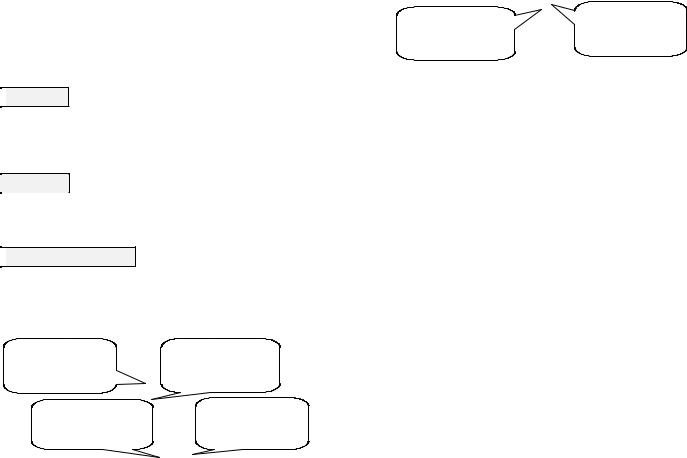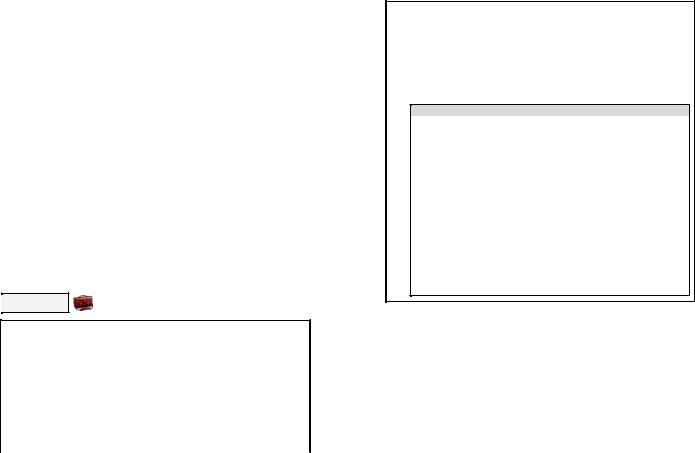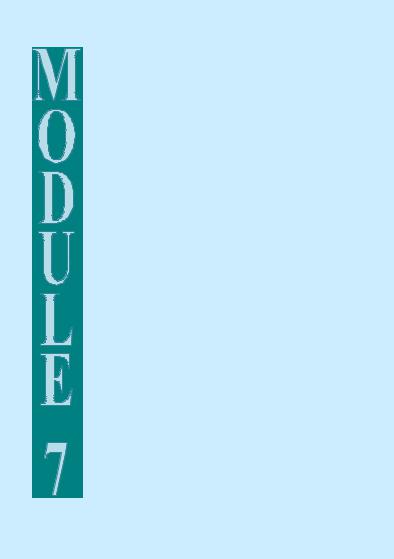
Learning to learn in English
.pdf
4) papyrus |
d) a small plate for writing on it made of clay |
5) clay tablet |
e) material that you write and draw on and that is |
|
also used for wrapping and packing things |
3.Study the timeline describing the evolution of paper and papermaking. Use timeandsequenceexpressionsintheToolboxtotellthehistoryofpapermaking.
AS OLDAS WRITING
Written communication has been the centre of civilization for centuries. However, putting thoughts
down in a written form wasn’t always easyorpractical.Paperhasalonghistory, beginning with the ancient Egyptians and continuing to the present day. It has largely survived the test of time but now it is facing a new challenge from its electronic equivalent. A particularly fruitful way to look at the evolution of
paper is to study how it has changed over time.
3500 BC |
Sumerians use cuneiform* alphabet, pressed in clay with a |
|
triangular stylus. Clay tablets were dried and/or fired for |
|
longevity. Some even had clay envelopes, which were also |
|
inscribed. |
3000 BC |
Egyptians created Papyrus, a material made from thinly cut |
|
strips from the stem of Cyprus Papyrus plant. |
2400 BC |
Date of the earliest surviving papyrus scroll with writing. |
200 BC |
Both Greeks and Romans used wax tablets, framed and |
|
backed with wood, for note taking, orders, correspondence, |
|
and other temporary communication. |
197-159 BC |
In the Middle East, near Pergamum, large herds of cattle wer |
|
raised for skins to be made into what we now call 'parchment |
|
It was the most popular material for manuscripts until the 12t |
|
century. |
105 AD |
Papermaking was invented in China by Ts'ai Louen. Material |
|
used: plant bark*, discarded cotton and old fishnets. |
|
|
300-700 |
|
Secret of papermaking crept out from China to Vietnam, |
|
|
Nepal, Korea and Japan. |
1151 |
|
First papermaking mill was established in Spain |
1300C. |
|
Papermaking reached Southern Italy, where, until quite |
|
|
recently, some of the oldest handmade paper mills* in Italy |
|
|
were operating in the Naples area. |
1448 |
|
Johann Gutenberg invented the printing press. |
1700 C. |
|
Tremendous increase in papermaking led to a serious shortage |
|
|
of raw materials. |
1843 |
|
Saxon Keller invented a ground wood pulp*. |
1854 |
|
Mellier Watt patented a chemical pulp. |
Late 18-th |
|
Nicholas Luis Robert created a machine that could produce a |
|
|
seamless length of paper. |
|
|
Paper production became industrialized with the advent of |
|
|
steam-driven paper making machines. |
1950s |
|
New material and fillers were used, new processed chemicals |
|
|
and dyers* were developed. |
1970 |
|
Electronic paper was developed by Nick Sheridon at Xerox's |
|
|
Palo Alto Research Center. The first electronic paper, called |
|
|
Gyricon, consisted of polyethylene spheres between 75 and |
|
|
106 micrometres across. |
Late 1990s |
|
An Electronic Paper Display was developed by E-Ink |
|
|
Company. This display possesses a paper-like high contrast |
|
|
appearance, a thin and light form. It gives the viewer the |
|
|
experience of reading from paper, while having the power of |
|
|
updatable information. |
————————————— |
||
*cuneiform |
– |
клинопись. |
*plant bark |
– |
кора (дерева). |
*paper mill |
– |
здесь, станок. |
*pulp |
– |
масса. |
*dyes |
– |
краситель. |
*wax |
– |
воск. |
(Adapted and abridged from the Internet sites www.papiermuseum.ch http://www. wipapercouncil.org/invention.htm http://www.hqpapermaker.com/paper-history/)
180 |
181 |

Tool box: Time and sequence
Time
In 1942, ...
In the year …
During the 20th century, ...
A decade ago ...
Sequence |
|
Before …/Before this, … |
For the following … years, … |
For the previous … years, … |
… years later, … |
Prior to this, … |
Soon/Shortly/Immediately afterwards, … |
Previously, … |
… after which … |
… years previously, … |
|
Later on … |
|
When/As soon as/After … |
|
During this period, … |
|
Throughout this period, … |
|
|
|
What do you think?
What other devices/tools have changed over the centuries?
What do you think such changes were caused by?
What improvements did they lead to?
 Get real
Get real
Search the Internet and/or anypopular science magazinesto find information on the transformations of any device or tool in your field of study. Create a timeline to demonstrate its evolution.

 Writing
Writing
Write a paragraph of about 100–150 words describing the evolution of the chosen device/tool. Give reasons for your choice. Make use of the timelineManagingyourlearningandToolboxes.
Managing your learning:
Narrating and reporting
Past tense is common. Chronological order is also common, but when we are writing about past events, it is necessary to be explicit about the order in which things happened. To show the sequence of events use dates and time as well as time/sequence expressions.
 In the Realm of Science
In the Realm of Science
1. Read the abbreviations and think of their equivalents in your native language. Consult a dictionary if necessary.
AI VR IT GM GPS HDTV HTML DNA R&D
2. Here are some of the widely used terms in science you should know.
Biodiversity |
– the existence of a large number of different kinds of |
|
animals and plants which make a balanced |
Bot |
environment |
– a computer program that performs a particular task |
|
Breed |
again and again many times; shortened from robot |
– to make animals or plants produce young ones in a |
|
|
controlled way, in order to develop new and better |
Cell |
types |
– the smallest unit of living matter that can exist on its |
|
Cellular |
own |
– 1) connected with or consisting of the cells |
|
|
2) connected with a telephone system that works by |
Cyber |
radio instead of wires, e.g. a cellular network |
– a prefix for things related to computers, especially |
|
Eco-friendly |
the Internet, e.g. cybercafe |
– not harmful to the environment |
|
Emission |
– the production or sending out of light, heat, gas, etc. |
Food additives |
– a substance that is added in small amounts to food, in |
Gene therapy |
order to improve it, give it colour, make it last longer |
– a type of medical treatment that changes someone’s |
|
|
genes to help them get rid of a disease or cure a |
Genetic |
medical condition. |
– when scientistschange thegenesofaperson, plant or |
|
engineering |
animal in order to make it stronger, healthier, bigger, |
Genome |
more attractive, etc. |
– the complete set of genes in a cell or living thing |
|
Gizmo |
– a general word for a small piece of equipment, often |
Hi-definition |
one that does sth in a new and clever way |
– a system which provides very high quality images in |
|
|
more detail than ordinary images |
182 |
183 |

Nanotech |
– short for nanotechnology – an area of science that |
|
deals with creating extremely small tools and |
Placebo |
machines |
– a drug which has no physical effects, used in |
|
|
pharmaceutical tests to distinguish the physical |
|
effects of taking a real drug from its psychological |
Side effect |
effects |
an extra, usually bad, occurrence caused by taking a |
|
|
drug. It is also used in non-medical English in a more |
Sci-fi |
neutral way |
– science-fiction |
|
Wi-Fi |
– short for wireless fidelity – a system for sending data |
|
over computer networks using radio waves instead of |
|
wires |
Unit 1. Progress Monitoring
In this unit you have worked on the following vocabularyrelated to the topic “Latest
achievements and future developments in science” |
|
||
|
challenging situation |
|
to be instrumental to |
|
technological innovations |
|
to supply sb with sth |
|
to witness sth |
|
a key/vital factor/role |
|
origins of sth |
|
to search for ways |
|
evolution of sth |
|
crucial/critical |
|
to make progress |
|
to be indispensible for |
|
a momentous change |
|
main/major reasons |
|
to provide the basis for |
|
to survive the test of time |
|
to become visible |
|
to face sth (challenges) |
Tick (V) the points you are confident about and cross (X) the ones you need to revise.
184
Unit 2 |
Into the Future |
 Lead-in
Lead-in
1.Take turns to read the statements about the future. Do you agree with them? If not, what do you think will happen?
Within fifty years many people will be living on the Moon and Mars.
By the middle of the century scientists will have discovered a way to stop ageing and terminal diseases such as cancer, AIDS, etc.
People will have developed their skills of telepathy and won’t need any other means of communication.
Mankind may contact other living beings beyond our solar system sometime at the end of the XXI century.
Breakthroughs will also be made in research on cultivating human organs.
We’ll live longer, 120 years or more.
We’ll crack the genetic code and doctors will be able to replace damaged DNA with healthy genes.
We won’t need doctors as we’ll have micro machines circulating in our blood and repairing our organs.
We won’t depend on the weather because we’ll learn to create favourable weather conditions.
 Reading
Reading
1.Read the excerpts from the popular science articles and match them with the headlines.
1. Imagine you’re at a party full of strangers. You’re nervous. Who are these people? How do you strike a conversation? Fortunately, you’re wired for social success: You’ve got a gizmo that beams energy at microchips in everyone’s name tag. The chips beam back name, occupation, hobbies, obses-
2. Imagine an army of tiny robots, each no bigger than a bacterium, swimming through your bloodstream. One platoon* takes continuous readings of blood pressure in different parts of your body; another monitors
185

sions, phobias, favourite movie, and availability for a date this Fri-day night
–whatever. This hasn’t quite happened in real life. But the world is already undergoing a revolution involving REID
–radio frequency identification…
3. Soon teams of up to 40 robots could be employed as border security guards and outside airports. The patrolling robots will use Wi-Fi to share what they see, sniff and hear. They may even be able to triangulate* the exact position of an intruder*, or the source of plume of smoke from an explosion, something no single robot could do.
The ideal is swarms* of robots that need no central control. And McLurkins’s robots have proved the principle that, equipped with the right algorithms, swarms of hardware can have autonomous control. Last year, for instance…
----------------------------
*triangulate– дать трехмерное изображение *swarm – здесь стая, толпа
*inrunder – вторгающийся, нарушитель
cholesterol; still others measure blood sugar, hormone levels and immune system activity…
If the nanotech experts are right, a call to a family doctor a few decades from now could be a high-tech variation on an old cliché: «Take two teaspoons of diagnostic sensors, and call me in the morning.”
----------------------------
*platoon – здесь взвод, отряд
4. … Self-heating hats and glow-in thedark sweatshirts might correctly be labeled as ‘smart’, but how about a shirt that ‘knows’ whether you are free to take a cell phone call or retrieve information from a 1000 page safety manual displayed on your inside pocket? Such items, termed ‘intelligent’ clothing to distinguish them from their lower-tech cousins, have proved…
A.Wearable Intelligence
B.The Radio Age
C.Robot Army Will Think For Itself
D.And Will They Go Inside Us?
What do you think?
Which technologies that you have read about are most likely to be implemented in future? Why?
What other innovations do you expect to see in your daily life in future? Why?
What challenges do you think the 21st century will bring?
Focus on the language
1.Check if you know the meaning of the phrases below. Give their equivalents in your native language.
Example: glow-in the-dark sweatshirts– sweatshirts that glow in the dark
- рубашка , светящаяся в темноте
|
radio frequency identification |
diagnostic sensors |
|
a 1000 page safety manual |
lower-tech cousins |
|
blood pressure |
blood sugar |
self-heating hats |
patrolling robots |
|
|
hormone levels and immune system |
a high-tech variation |
|
activity |
autonomous control |
2.Read the sentence from the text paying attention to the words: another and other(s). Which words do they refer to?
One platoon takes continuous readings of blood pressure in different
parts ofyourbody;anothermonitorscholesterol;stillothersmeasure blood sugar, hormone levels and immune system activity…
Another, other(s) and the other(s)
Another + singular countable noun
to mean ‘one more’
e.g. Could I have another book on this subject.
to mean ‘alternative/besides this’
e.g. The scientists have started another experiment.
The other + singular noun
to mean ‘part of the set’
e.g. Hold the beaker in one hand and the pipette in the other. The other + plural noun
to mean ‘the rest of the set’
e.g. She promised to bring the other books on AI development next week.
Other + singular noun
to mean ‘different from the item/person already mentioned’. e.g. Ask me some other time, when I’m not so busy.
Other + plural noun
to mean‘more of the set/additional/some more’
e.g. What are his other inventions?
When other is used without a noun, it has –s in the plural. e.g. His favourite subjects were Maths, Physics, Computer Science
and others. (other subjects)
Another way of substituting for the noun is to use other+ one or ones e.g. This chemical is poisonous. Other ones are poisonous too.
186 |
187 |

Practice
1.Fill in the gaps in the sentences with another, other or others. Put the where necessary.
a) Be careful, this chemical is poisonous. |
................. |
are poisonous too. |
|
b) |
This book has a page missing. Please give me ................. |
one. |
|
c) |
Some metals are magnetic and ................. |
aren’t. |
|
d)I’m not surprised he’s got a sore throat – he was eating one ice-cream after ................. .
e) |
There’s no ................. |
work available at the moment. |
|
f) |
Would anyone like ................. |
|
piece of cake? |
g) |
Are you planning to take |
................. trip to Himalayas? |
|
h) |
................. Internet sites on the subject of the project work were not |
||
|
reliable enough. |
|
|
i) |
You shouldn’t expect ................. |
|
to do your work for you. |
2.The sentencesbelow are all about the future. With a partner decide which rule goes with which sentence.
I definitely don’t believe people will ever live in giant space stations in order to solve the problem of overpopulation.
People will be living in giant space stations in order to solve the problem of overpopulation.
By the year 2050 people will have built several giant space stations in order to solve the problem of overpopulation.
We are about to start building a giant space station in order to solve the problem of overpopulation.
In 2030 we are going to start building a giant space station in order to solve the problem of overpopulation.
Present Simple and Present Progressive
Future Simple and Future Progressive, and Future Perfect
We use … to speak about future personal arrangements and fixed plans or firm intentions; we usually give the time, date and place
We use … to say that something will be going on at a certain time in the future.
Weuse…to makepredictions when youdon’t have‘present evidence’,todescribeadecision madeat themoment of speakingorto talk about hopes,beliefs,promises,guesses,etc.
We use … to say that something will have been completed by a certain time in the future.
We use … to talk about the future but mostly when we talk about timetables, routines and schedules.
188
Practice
1.Choose the correct formof the verb inbrackets to complete the sentences.
a)Peter (will/is going to be) at a conference in Geneva next Friday.
b)Oh no! I’will ve broken the container with poisonous substance. What (am I going to say/will I say)?
c)Jack (is having / will have) a dinner party next Saturday.
d)Ann (will be helping/will help) us to label the containers in the lab tomorrow afternoon.
e)By the time you arrive, I (will have checked /will be checking) the equipment for the experiment.
f)(I’ll be studying/I’ll have studied) at 9 tomorrow evening.
g)Look at the level of pressure on the monitor! It (is going to be/will be) well above the normal.
h)Save the data! It looks like the computer (is going to/will) shut down.
i)I (will be using/will have been used) the microscope for two hours tomorrow.
j)By the time I’m 50 I (will have patented/will patent) a number of remarkable inventions!
 Listening
Listening
1.Listen to Simon and Todd talking about what future will be like for their kids. Complete the chart.
Future in 10 years’ time |
Future in 30 years’ time |
|
|
|
|
What do you think?
Do you agree with their opinions? Why?/Why not?
What other technological challenges do you think the world will face in the 21st century? Which of them do you consider most promising or devastating for the humanity?
Writing |
189 |
|
|

Write a questionnaire to find out what your fellow students think about the life style, education, transport, travel and scientific achievements in the nearest or distant future. Be sure to use various tense forms for expressing future.
 Speaking
Speaking
1.Interview three of your fellow students. Ask about their predictions and comment on them like this:
Example:
A: Do you think that in the future computers will replace teachers? B: Yes, I do.
C: So do I. / Do you? I don’t think they will.
2.Sum up their opinions. Are your fellow students optimistic or pessimistic about the future?
 Get real
Get real
Search the Internet or popular science magazines to find information on the future developments in your field of study. Choose to speak about three most probable innovations and present your findings to the whole class.

 Reading
Reading
1.You are going to read a plot synopsis of the sci-fi episode entitled “The New Breed”. What scientific advances and their consequences do you think this episode is about? Discuss as a class.
2. Read and check your predictions. |
Managing your learning |
A plot synopsis is a brief |
|
|
description of the contents of |
|
a book or film. |
190
“The New Breed”
Introduction
Dr. Stephen Ledbetter makes a technological and medical breakthrough when he creates a type of tiny machines, known
as nanobots, capable of curing any disease or imperfections in the human body.
Plot synopsis
Stephen's best friend Dr. Andy Groenig tells him that he wants to marry Stephen's sister, Judy. Overjoyed at the news, Stephen shows Andy the nanobots and explains what a remarkable breakthrough they are.
Later on Andy discovers that he has an inoperable cancer, and has approximately one year to live. In desperation he sneaks into Stephen's lab and injects himself with the nanobots. They quickly eliminate his disease.
Andy tells Stephen about the success of his machines. Stephen becomes concerned about the impact the nanobots may have on Andy's health — and about the possibility that he may go to prison for using an untested drug on another person. Stephen wants to deactivate the nanobots, but Andy tells him not to worry because he injected himself – so Stephen is not responsible. Andy convinces him to leave the nanobots alone.
The nanobots not only cure Andy's cancer, they improve his health in other ways, including: removing a scar, improving his eyesight, and making him stronger and more energetic. In Stephen's lab, Andy puts his hand over a bunsen burner* causing a severe burn, but the nanobots repair the damaged skin in seconds.
Stephen starts a series of tests to find out exactly what the nanobots are capable of. Andy is placed under water where he is unable to breathe, but the nanobots keep him alive. Things begin to go wrong when Andy wakes up the following day to find that the nanobots have responded to the tests by giving him gills*, allowing him to breathe underwater in the future. When Stephen learns this news, they both agree that the nanobots must be deactivated immediately. Stephen takes measure after measure to stop them, but he is never able to get rid of them.
The nanobots continue making "improvements" to Andy, including giving him eyes in the back of his head, keen hearing and bones above his stomach.
Stephen is ultimately unable to deactivate the nanobots. In dispair Andy kills himself to keep his fiancée from seeing the monster he has become. Stephen burns his laboratory, destroying any remaining nanobots and his research. The episode ends with Andy's grieving fiancée having cut her finger on a shattered photograph of him. The wound heals immediately ….
(Adapted from http://en.wikipedia.org/wiki/The_New_Breed_%28episode%29)
————————————
*Bunsen burner – горелка Бунзена.
*gills – жабры.
191

What do you think?
Would you like to read the original story? Why?/Why not?
Could such a situation happen in real life?
What future do you think nanobots have in medicine?
Can you name any controversial technological developments of the present time?

 Writing
Writing
Work in groups. How do you think the story may continue? Write your version of the story. Be sure to use various ways of expressing future. Read out your stories and discuss as a class.
 Get real
Get real
Search the Internet or popular science magazines to find and read a short sci-fi story. Write an abstract. Present your abstracts to the class.

 In the Realm of Science
In the Realm of Science
1. Complete the sentences below with these words.
atom |
mercurial guinea pig planet |
nucleus |
formula |
a) They couldn’t understand what was happening around: it was as if they were from a different __________.
d) There’s no set_________ for being successful at public speaking – some people are and some aren’t.
b) You were so cheerful a moment ago and now you’re out of mood again. You are so
___________.
c) There isn’t an___________
of truth in your excuse for missing the class, Antony.
e) The project was a success as
f) Don’t even ask me to be a
it was done by a small _______
__________ in your research
of people working intensively
into the common cold. The
and enthusiastically together.
exams are coming!
2.Here are some idiomatic phrases frequently used in science. Give their equivalents in your native language.
trial and error |
– a process of attaining a goal by trying |
|
different methods until a successful one is |
the rule of thumb |
found |
– a practical and approximate way of doing |
|
to blind someone with |
or measuring something |
– to confuse people by using technical |
|
science |
language that they are not likely to |
it's not rocket science |
understand |
– it is easy to understand, obvious |
|
to recharge your |
– torestorrelaxinordertoget backyour |
batteries |
energy |
(at) the cutting edge |
– (at) the forefront of progress in a particular |
don’t push my |
area |
– is said to someone who is starting to annoy |
|
buttons! |
you |
to hit the airways |
– to go on radio and TV to promote |
light years ahead |
something or to tell their side of a story |
– you are a long way in front of others in |
|
on the same |
terms of development, success, etc |
– to have the same ideas and opinions about |
|
wavelength |
something |
sputnik moment |
– it is a point where people realise that they |
|
are threatened of challenged and have to |
it's not an exact |
redouble their efforts to catch up |
– sth involves a lot of guessing and there is |
|
science |
not just one right way to do it |
to get wired crossed |
– to misunderstand each other, especially |
|
when making arrangements |
(Cambridge International Dictionary of Idioms © Cambridge University Press 1998)
192 |
193 |

Unit 2 Progress Monitoring
In this unit you have worked on the vocabulary related to the topic “Latest achievementsand future developmentsin scienceand technology”.
|
to cure terminal diseases |
|
neural network |
|
to develop the skills of telepathy |
|
cyberspace navigation |
|
to contact with living beings |
|
to make a technological/medical |
|
beyond the solar system |
|
breakthrough |
|
to colonize other planets |
|
nanobots |
|
to crack the genetic code |
|
artificial intelligence |
|
to cultivate/repair human organs |
|
telecommunications |
|
nanotechnology |
|
togrowmorepowerfuland intelligent |
|
intelligent clothing |
to have advantages over sth |
|
|
autonomous control |
to merge with computers |
|
Tick(V)thepoints you areconfident aboutand cross (X) theones youneed to revise.
Unit 3 Revise & Practise
1. Explain the similarity and difference between these pairs.
advantages |
– |
disadvantages |
breakthrough |
– |
cutting edge |
optimist |
– |
pessimist |
mechanism |
– |
device |
2.In pairs make up 5 gapped sentences and test your fellow students on the usage of another and other.
3.Work in teams. Hold a competition. Brainstorm as many changes that will have occurred in our life by 2050 as possible.
4.Read these sayings. Comment on the one you like most.
Recall Murphy’s Law - if anything can happen, it eventually will.
“When it comes to the future, there are three kinds of people: those who let it happen, those who make it happen, and those who wonder what happened”. John M. Richardson.
“The real danger is not that computers will begin to think like men, but that men will begin to think like computers”. Sydney J. Harris
Progress Test
1. Spot the odd one out. |
|
|
|
a) advances |
developments |
progress |
benefit |
b) foundations |
origins |
evolution |
basis |
c) gizmo |
tools |
devices |
instruments |
d) consequence |
affect |
result |
effect |
2.Think about the year 2030. What do you think you
–will be able to do?
–will be doing?
–will have done by that time?
Write several sentences. Be sure to use the various tense forms of expressing future. Read out your predictions. Discuss them as a class.
194 |
195 |

3. Fill in the gaps with another, other, others. Use the where necessary.
a) I left my pencil at home. Do you have any .............. |
pencils? |
|
|
b)I have four dictionaries. Two ofthemare electronic, but .............. |
are |
||
books. |
|
|
|
c) We had to drive .............. |
ten miles to get to the seashore. |
|
|
d).............. day we went to the exhibition of gemstones and samples of meteorites at the university museum.
e)Kate has three rulers. One of them is white, .............. are black.
f)Don’t worry, I’ll finish writing the essay and submit it before the deadline one way or .............. .
g)Where are .............. |
samples of minerals? Has anybody seen them? |
|
h)I’m still hungry, can I have .............. |
hamburger? |
|
4. Complete the sentences with the appropriate idiom. a) We developed the new software through .............. .
b)I think he decided .............. because he didn’t want us to ask any questions.
c) We’re talking basic common sense here - .............. .
d)Iwould liketo doa postgraduatecourse andget involved ina..............
research.
e)I’m really glad Professor Jenkins is my scientific adviser. We are
.............. .
 Self study
Self study
At the Cutting Edge
Throughout history, the discoveries and inventions have determined to a large extent the ways in which we live our lives. Science has had a significant impact on our daily routines.
Your faculty is planning an exhibition on future trends and challenges that will occur in the 21th century. You are willing to participate in the project. To make a successful poster which is both informative and eye-catching you need to do some research on the topic.
Search the Internet to find relevant information to include in your poster
Include necessary photos, diagrams, timelines, etc.
Prepare and present your poster to the class
QUESTIONS TO GUIDE YOU:
What particular area in your field of study have you chosen for your poster presentation?
What most recent significant achievements or advances can you name?
What are the most challenging problems in this field at present?
What innovations/advances are about to come?
NB! Make use of the instructions on how to make a poster or poster presentation
Managing your learning: Making a poster or poster presentation
|
Step One |
– |
Brainstorm the ideas you are going to highlight in |
|
your |
|
poster. |
|
Step Two |
– |
Go online to find the information to include in your |
|
|
|
poster. |
|
|
– |
Develop the information you have found into |
|
|
|
separate paragraphs. |
|
|
|
|
|
|
– |
Write each paragraph on a separate piece of paper. |
|
Step Three |
– |
Structure your text. Think of the order and place of |
|
|
|
each paragraph on your poster. |
|
|
|
|
|
Step Four |
– |
Proofread the material checking the spelling, |
|
|
– |
punctuation, grammar and vocabulary. |
|
Step Five |
– |
Add necessary photos, diagrams, timelines, etc. to |
|
attractive. |
|
make your poster more comprehensibleand |
|
|
||
|
Step Six |
– |
Try to predict the questions that might be asked and |
|
|
|
think how you would answer them. |
|
|
|
|
|
Step Seven |
– |
Pin the poster on the wall of the classroom and give |
|
|
|
your presentation. |
196 |
197 |

THE SKILLFUL ME!
“Realsuccess is finding your lifework
in the work that you love”
David McCullough
Learning Goals
to do information search for job ads
to write a CV and a personal letter about a job
to learn how to speak on the phone and arrange for a meeting
to talk about the part-time/holiday job you would like to do
to revisit multi-word verbs
to revisit reported speech
